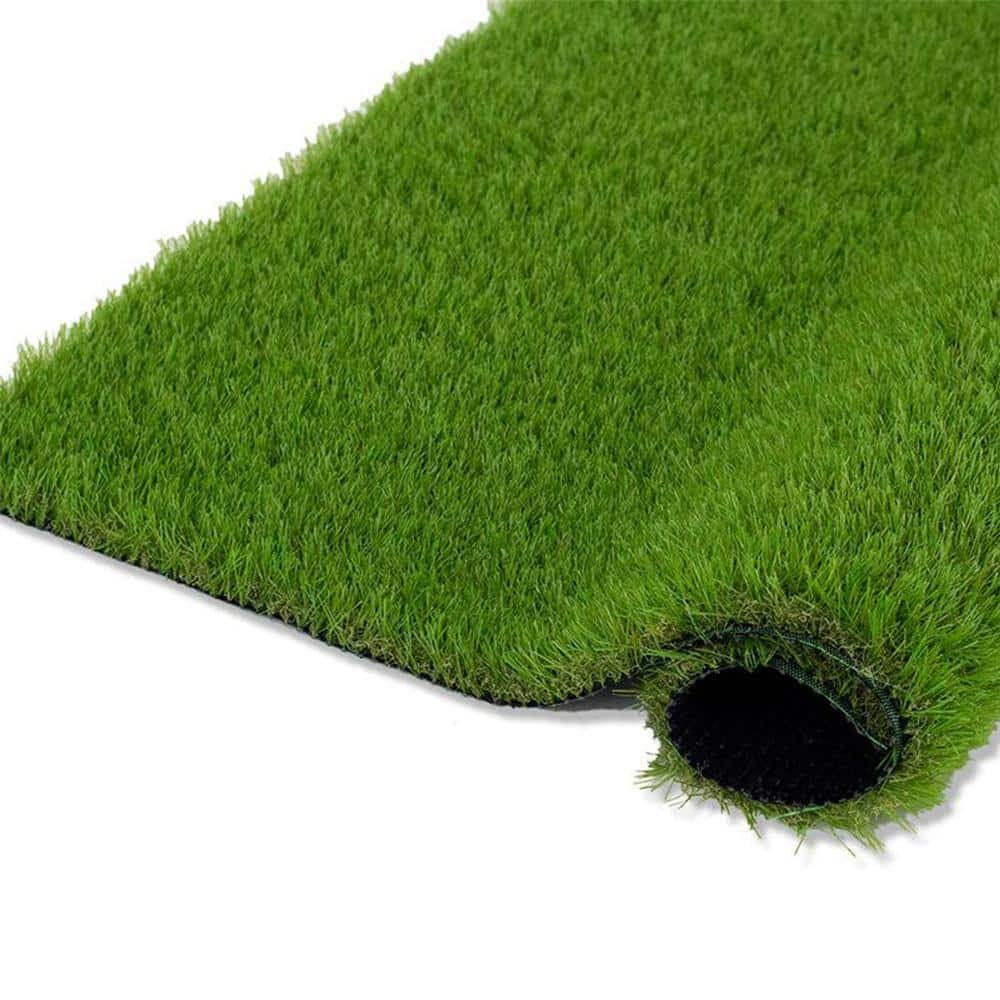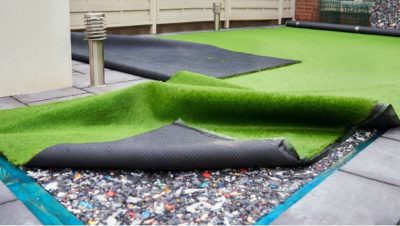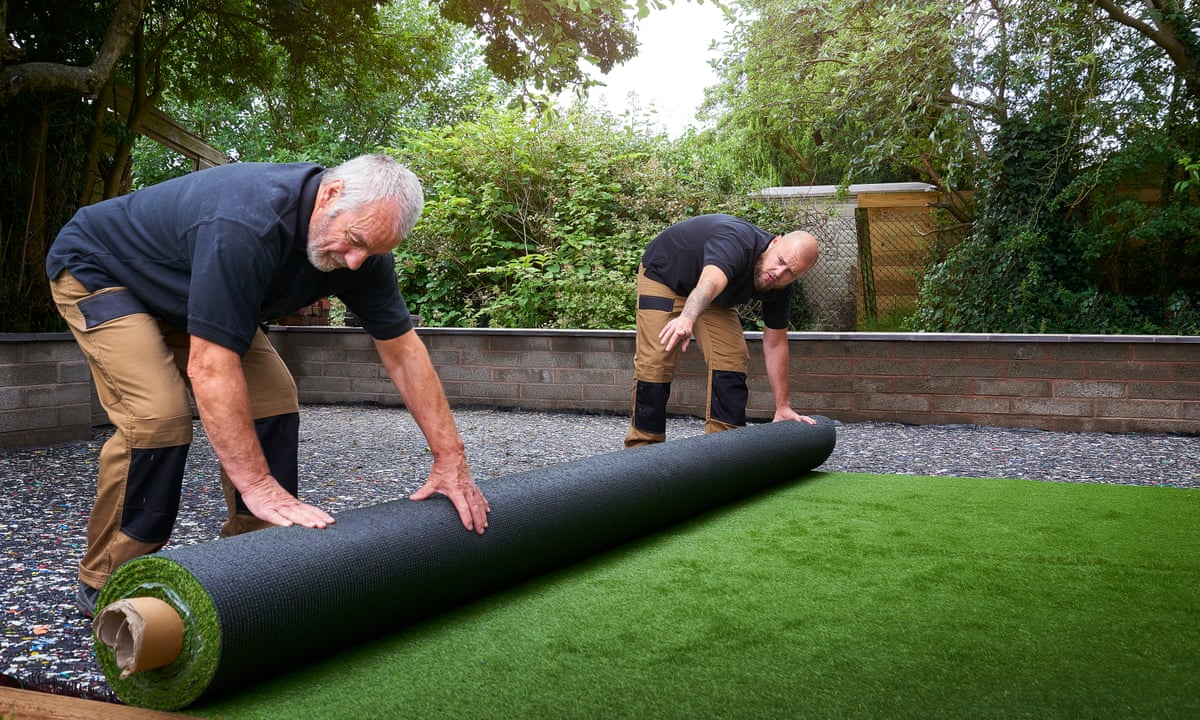Understanding Just How Synthetic Grass Works for Your Home and Garden
Fabricated turf has actually arised as a useful remedy for property owners looking for to boost their outside rooms without the burdens of conventional yard upkeep. Understanding its composition, setup procedure, and the numerous kinds available can expose substantial advantages for both aesthetics and capability. Nonetheless, the implications of choosing synthetic grass prolong past simple appearance; they discuss environmental considerations and lasting sustainability. As we discover these elements, one have to consider how this innovative method can essentially change the landscape of home gardening. What aspects should you evaluate before making the shift?
Benefits of Fabricated Turf
Acknowledging the growing popularity of man-made turf, it is vital to explore its countless advantages. Unlike natural lawn, artificial lawn does not need fertilizing, mowing, or watering, which translates to time and cost financial savings for property owners.
In addition, synthetic grass offers a lush and constantly environment-friendly appearance throughout the year, no matter climate condition. This aesthetic charm enhances the aesthetic high quality of any landscape, making it an appealing selection for residential homes. Man-made grass is sturdy and made to withstand hefty foot traffic, making it an optimal option for households with pets and children.
Safety is another critical consideration; modern synthetic grass is often made from safe products and includes shock-absorbing modern technologies, minimizing the danger of injuries during play. Fabricated turf is immune to weeds and pests, eliminating the demand for chemical therapies, consequently promoting a healthier outside atmosphere. In general, the benefits of fabricated lawn make it a compelling option for boosting home and garden spaces.
Installment Process Overview
When taking into consideration the setup of synthetic lawn, a methodical method is essential to make certain optimal outcomes. The installation procedure usually starts with complete site prep work, which involves getting rid of the area of any kind of existing turf, particles, and rocks. This step is essential for establishing a secure and level structure.
Next, it's vital to evaluate the water drainage capabilities of the location. Proper drain is vital to stop water merging externally, which can result in early wear or issues with mold and mildew. If required., this may need excavation and the installment of a drainage system.
As soon as the site is prepared, a base layer is set up, normally including crushed rock or decomposed granite, compacted to produce a strong surface. After accomplishing a smooth base, a geotextile material is set to inhibit weed growth.
The last phase entails laying the synthetic grass itself. The grass rolls are placed, cut to fit, and safeguarded at the joints utilizing glue or specific lawn tape. Infill materials might be used to boost stability and enhance the total look. Correctly complying with these steps will lead to a resilient and aesthetically pleasing synthetic grass installment.
Kinds of Synthetic Grass

Among the key categories is domestic grass, which is typically used in gardens, yards, and play locations. This type typically features a soft texture, making it secure for youngsters and pets. Industrial turf, on the other hand, is engineered for high-traffic areas, such as sports areas and metropolitan parks. It provides toughness and strength, guaranteeing it stands up to extensive use while maintaining its appearance.
One more classification consists of landscape turf, which simulates natural grass very closely to boost the aesthetic appeal of yards and outside spaces. In addition, putting green lawn is particularly designed for golf fanatics, featuring a shorter heap height and a smooth surface for an optimum placing experience.
Finally, pet-friendly turf integrates antimicrobial homes and durable products to ensure a sanitary and risk-free setting for pet dogs. Picking the right type of synthetic grass is vital for attaining the desired appearance and capability in your house and garden.
Maintenance Needs
Proper maintenance is essential for prolonging the lifespan and appearance of fabricated turf. Routine maintenance not only enhances aesthetic charm yet also makes sure optimum efficiency. The primary maintenance tasks consist of cleaning, rinsing, and inspecting the grass.

Rinsing the turf with water aids remove pet dog, dirt, and particles waste. Utilizing a their website tube with a spray nozzle makes this job reliable and reliable. In locations vulnerable to hefty rains, guarantee appropriate water drainage to avoid pooling.
In addition, regular inspections for damages, such as splits or loosened joints, are critical. Timely repair work can prevent a lot more substantial issues and maintain the stability of the grass. By sticking to these upkeep demands, house owners can appreciate the beauty and functionality of their synthetic grass for several years ahead, ensuring a vibrant and inviting outside area.
Ecological Factors To Consider
Synthetic grass provides an intricate selection of ecological considerations that necessitate careful examination. Artificial turf companies. While it minimizes the demand for water, fertilizers, and pesticides, which are usually connected with natural lawn maintenance, there are significant worries regarding its usage, manufacturing, and disposal
The manufacturing of artificial grass involves petroleum-based materials, questioning regarding nonrenewable fuel source usage and greenhouse gas exhausts. The installment procedure frequently needs a layer of infill, regularly composed of materials like crumb rubber, which can release unsafe chemicals into the setting.

Disposal of synthetic grass offers an additional difficulty, as it is not naturally degradable and can add to landfill waste. Some recycling alternatives exist, yet they are not widely readily available or easily accessible.
Final Thought
In summary, artificial lawn offers many advantages for domestic and yard applications, including visual allure, low maintenance, and safety and security for kids and animals. The installation process requires cautious consideration of drain, base products, and lawn placement to ensure resilience and performance. Different types of fabricated lawn accommodate various requirements and preferences, while ecological considerations highlight its prospective sustainability advantages. Generally, fabricated grass functions as a useful and attractive option to all-natural turf in outdoor areas.
In general, the benefits of artificial turf make it a compelling alternative for boosting home and yard spaces.
When thinking about the installment of artificial grass, an organized approach is vital to make sure optimum outcomes. The grass rolls are put, reduced to fit, and protected at the seams utilizing adhesive or specialized grass tape. Appropriately complying with these actions will certainly result in a sturdy and aesthetically pleasing artificial turf installation.
In summary, synthetic turf presents various advantages for domestic and garden applications, including aesthetic appeal, low maintenance, and security for kids and animals.